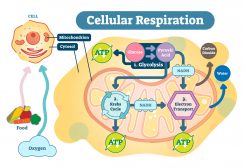Table of Contents
Definition
noun
plural: compounds
com·pound, ˈkɒmpaʊnd
(general) A material made up of two or more parts or elements
(biochemistry) A substance consisting of atoms or ions of two or more elements that are chemically bonded together, e.g. carbon dioxide, a substance consisting of carbon and two oxygen atoms
adjective
(zoology) Consisting of distinct individuals that are connected forming a colony, such as a coral
(botany) Consisting of similar parts that combine to form a whole, as in a compound fruit that developed from several ovaries, or a compound leaf composed of leaflets
Details
Chemical compound
A chemical compound refers to a substance made up of two or more elements that are chemically bonded together.
A substance pertains to that which has a definite chemical composition and distinct properties and made up of elements in combination with another or the same elements. All compounds are substances but not all substances are compounds since pure elements are also chemical substances.
A chemical element, in turn, is defined as a pure substance of only one type of atom. An element would have atoms having the same number of protons.
Elements form a compound. Two or more elements that are held together by a chemical bond results in a compound. For instance, the combination of the elements sodium and chlorine results in the formation of sodium chloride (table salt). Thus, a substance comprised of only one type of element is not a chemical compound but an allotrope of an element. For example, a diamond is a pure element comprised of carbon atoms arranged in a crystal.
Many of the elements that occur naturally on Earth are chemically combined. Examples of the common compounds crucial to life are water, sodium chloride, and carbon dioxide. The processes believed to have primordially produced the natural elements are the nucleosynthesis in the Big Bang, stellar nucleosynthesis, explosive nucleosynthesis in supernovas, and cosmic ray spallation.
A chemical formula is used to indicate the proportions of atoms that make up a chemical compound. The symbol specifies the constituent element whereas the subscripts tell how many atoms of that element make up a compound. The chemical composition of a compound may be altered by subjecting it in a chemical reaction.
A chemical bond is the attractive force that holds atoms together. There are four major types of chemical bonds: (1) ionic bond, (2) covalent bond, (3) hydrogen bond, and (4) metallic bond.
The ionic bond is a chemical bond where there is a complete transfer of an electron from one atom to another. It is an electrostatic attraction between oppositely charged ions, i.e. cation and anion. A cation is a positively charged ion whereas an anion is a negatively charged ion. The compound formed by the elements held by the ionic bond(s) is referred to as an ionic compound. Sodium chloride is an example of an ionic compound where the cation Na+ and the anion Cl– are held together by an ionic bond. An ionic compound that has hydrogen ions (H+) is classified as an acid. Conversely, an ionic compound that has hydroxide (OH–) or oxide (O2-) is classified as a base. An ionic compound formed by acid-base reactions and without those ions is called a salt.
A covalent bond is a type of a chemical bond wherein electrons are shared between atoms. For example, a water molecule has two hydrogen atoms and a central oxygen atom held together by two covalent bonds; each hydrogen atom shares a pair of electrons with the oxygen atom. A covalent bond may be single, double, or triple. A single bond (-) is when the atoms share two electrons. It is usually a sigma (σ) bond. A double bond (=) is the sharing of four electrons between two chemical elements. It is usually comprised of the stronger σ bond and the weaker pi (π) bond. When the covalent bond involves six electrons between two atoms, it is a triple bond. A triple bond (≡) usually has one σ bond and two π bonds. The single bond is the weakest of the three since there is only one bond that connects two atoms together.
The hydrogen bond is a low-energy electrostatic bond wherein hydrogen serves as a bridge between two atoms. It forms when the slightly positive hydrogen atom of a polar covalent bond forms an electrostatic link with the more electronegative atom of a polar covalent bond in the same or another molecule. As the name implies, it involves a hydrogen atom that is attracted to electronegative atoms, e.g. oxygen, fluorine, nitrogen, of a polar covalent bond in the same or another molecule. The hydrogen bond is a weak chemical bond but is relatively common in organisms. It is responsible for the secondary and the tertiary structures of nucleic acids and proteins. DNA, for instance, has a double helical structure that is largely due to the hydrogen bonds between paired nitrogenous bases.
Metallic bonding is an electrostatic force between conduction electrons and positively charged metal ions. Intermetallic compounds are held together by metallic bonds.
Organic vs. Inorganic
An organic compound is a type of compound containing carbon atom. An inorganic compound is a type of compound lacking carbon atoms, or when present is ionically bound to other atoms. Living things are described as organic since they are composed of organic compounds. Examples of organic compounds are carbohydrates, lipids, proteins and nucleic acids. Since they are comprised of carbon-based compounds they are broken down into smaller, simpler compounds through decomposition when they die. Living organisms also excrete or secrete material that is considered an organic material. The organic matter from living things becomes a part of the environment. Thus, organic matter abounds in the ecosystem, e.g. soil ecosystem. The organic matter moves into the soil or into the mainstream water where it then serves as a source of nutrition to living organisms.
Other biological definitions
In general, a compound pertains to a material made up of two or more parts. For instance, a compound leaf is a type of leaf consisting of leaflets. A compound fruit is that which is developed from several ovaries. Thus, a compound, in a botanical context, describes a plant structure consisting of similar parts that combine to form a whole.
Supplementary
Etymology
- Latin: com (“together”)
- Latin: ponere (“to put”)
Derived terms
Further reading
Compare
- mixture
- element
See also
© Biology Online. Content provided and moderated by Biology Online Editors







